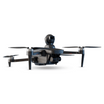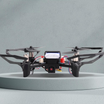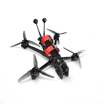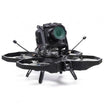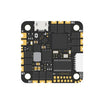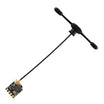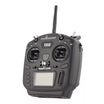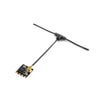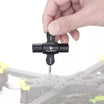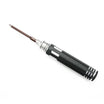Technology has always been a double-edged sword. While it has brought convenience and efficiency to many sectors, it has also introduced new vulnerabilities—especially in critical infrastructure.
One such emerging concern is the threat that drones pose to nuclear power plants.
Once a security issue confined to fiction, the increasing accessibility and sophistication of drones have turned it into a real-world challenge.
But how serious is this threat, and what can be done to counter it? Let’s explore the risks, recent incidents, and potential solutions.
Why Are Nuclear Power Plants Vulnerable to Drones?
Nuclear power plants are among the most heavily protected facilities in the world, designed to withstand earthquakes, floods, and even aircraft crashes. However, drones introduce a new kind of security challenge. These unmanned aerial vehicles (UAVs) are small, difficult to detect, and capable of reaching areas that traditional security measures may not cover. Here’s why they are a concern:
Surveillance and Intelligence Gathering Drones can be used to collect valuable intelligence on a nuclear power plant’s security protocols, layouts, and weak spots. High-resolution cameras mounted on drones can capture detailed images of restricted areas, aiding potential attackers in planning an intrusion.
Physical Attacks While the idea of a drone crashing into a nuclear reactor and causing a meltdown is exaggerated, drones can still pose physical risks. Some incidents suggest that drones equipped with small explosives or flammable payloads could target cooling systems, transformers, or spent fuel storage facilities.
Cybersecurity Threats Advanced drones can serve as cyber-attack vectors, potentially interfering with the digital systems that control a nuclear plant’s operations. A drone equipped with a signal jammer or a rogue transmitter could disrupt communications or introduce malware into the plant’s network.
Also read: India’s first drone city to rise in Kurnool.
Recent Drone Incidents Near Nuclear Facilities
The concern about drones infiltrating nuclear sites is not hypothetical. Several real-world incidents have raised alarms among security experts.
The Zaporizhzhia Nuclear Power Plant Crisis
One of the most high-profile cases occurred in Ukraine. The Zaporizhzhia Nuclear Power Plant, Europe’s largest nuclear facility, has been a repeated target of drone activity amid the ongoing conflict. In April 2024, drones struck the plant’s surveillance and communication infrastructure, causing minor damage.
Later, in August 2024, a fire broke out at a cooling tower, suspected to have been caused by an explosive-laden drone. These incidents highlighted the vulnerabilities of even the most secure facilities.
Drone Swarms Over French Nuclear Plants
In recent years, France has also faced mysterious drone activity over its nuclear reactors. In 2023, multiple unidentified drones were spotted flying near nuclear plants, prompting investigations into potential sabotage attempts.
Authorities never identified the operators, but the incidents underscored the difficulty in monitoring and preventing such threats.
Also read: Case study on Russia-Ukraine conflict.
Regulatory Challenges and Responses
Governments worldwide are scrambling to address the risks drones pose to nuclear facilities, but regulatory efforts are still evolving.
United States: Strengthening Detection and Defence Systems
The U.S. Nuclear Regulatory Commission (NRC) has tightened its policies regarding drone threats. As of 2024, nuclear power plant operators must report any drone sightings to the NRC, FAA, FBI, and local law enforcement. The Department of Energy has also ramped up research into anti-drone technologies, such as radio frequency jammers and AI-powered detection systems.
Europe: Legal and Tactical Approaches
The European Union has imposed stricter no-fly zones around nuclear power plants, and several countries, including France and Germany, have introduced drone-neutralizing technology. However, enforcing these restrictions remains challenging, as drones can be operated remotely and are increasingly difficult to track.
How Can We Protect Nuclear Plants from Drone Threats?
Given the evolving nature of drone technology, security measures must also advance. Here are some potential solutions:
Anti-Drone Technology - The deployment of counter-drone systems, such as radar-based detection, radio frequency jammers, and laser interception, is crucial. Some facilities are even experimenting with drone-hunting drones that can intercept and disable rogue UAVs.
Stronger Legal Penalties - Governments must impose stricter penalties for unauthorized drone activity near nuclear sites. Increased fines and potential jail time for offenders can serve as deterrents.
Collaboration Between Public and Private Sectors - Security agencies, nuclear operators, and drone manufacturers must work together to develop advanced tracking and identification systems. Implementing geofencing technology, which prevents drones from flying into restricted zones, is another effective step.
Public Awareness and Reporting Systems - Encouraging citizens to report suspicious drone activity near nuclear plants can help authorities act swiftly. The faster a drone is identified and intercepted, the lower the risk of a security breach.
The Path Forward
Drones are not inherently a threat—when used responsibly, they serve many beneficial purposes, from aerial inspections to emergency response. However, their misuse poses serious challenges, particularly for nuclear security. The key is to strike a balance between embracing technological advancements and ensuring stringent protective measures.


